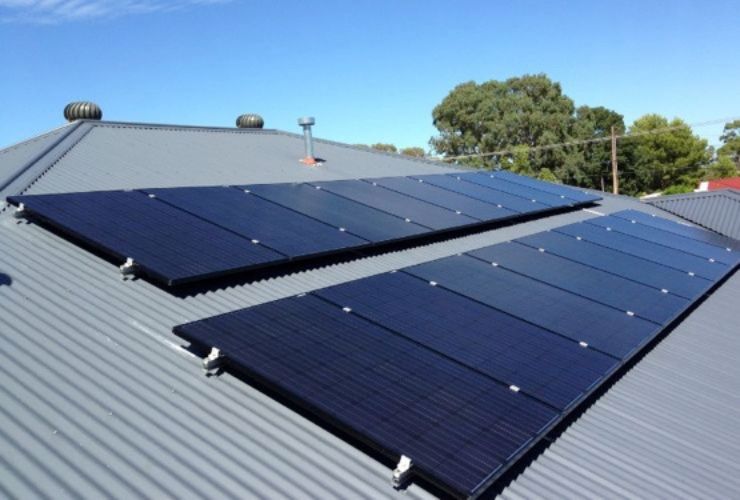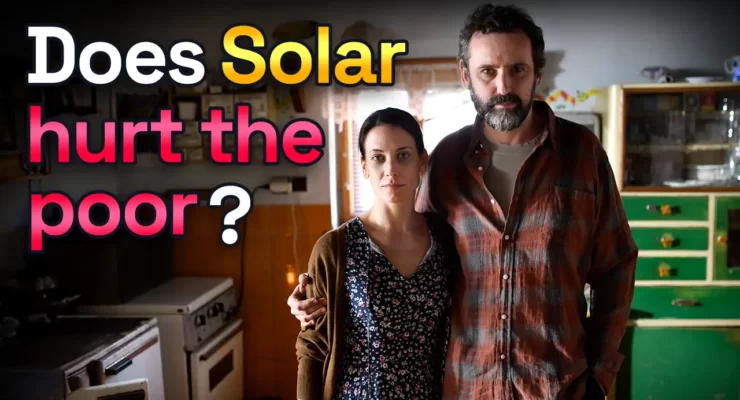Fast read
Rooftop solar energy is gaining momentum globally, offering eco-friendly power and reduced electricity bills. While solar users benefit directly, non-users also enjoy potentially lower grid electricity.
Additionally, solar energy combats climate change and reduces pollution. However, high feed-in tariffs and Small-scale Technology Certificates (STCs) have temporarily raised grid electricity costs for all. Government initiatives and community solar farms provide solutions for those unable to afford or install panels, ensuring everyone benefits from solar power.
How does rooftop solar affect low income households?
Solar energy, once an emerging industry, now stands at the forefront of local household solutions. Australia, being blessed with ample sunshine, has gravitated towards solar. With its promise of reducing carbon footprints and slashing average electricity bills, residential solar system installations have grown a lot. Yet, for all its success, solar has it’s provoked a dilemma. Consequently, it leaves a segment of the population unsupported. This applies especially to those who rent or cannot afford the upfront installation costs also known as low income households.
The solar upsurge – does it benefit everyone?
The broad reach of solar has a notable effect. It is potentially decreasing the costs of conventional grid electricity, benefiting everyone. Interestingly, solar energy impacts not just those who adopt it, but the larger energy economy as well. This comes from the steady feed from solar systems across Australia during the day into the grid, reducing the load on non-renewable energy sources.
For example, during extreme summer days, electricity consumption traditionally peaked, and wholesale electricity prices often spiked as demand sometimes surpassed supply. Now, prices stay relatively stable because of the solar generation influx, especially when air-conditioning use soars. This stability during peak times showcases how solar energy can foster broader economic stability, especially for low income households.
Remarkably, this reduction in price spikes benefits not only solar panel owners. All households, regardless of their solar status, enjoy these stabilised daytime prices. This financial relief during often financially taxing summer months is a clear advantage of solar energy grid integration, especially for low income households.

A common fight against global warming
Climate change and pollution, the pressing issues of our age, find a formidable opponent in solar energy. Solar diminishes our dependence on pollutant-heavy fossil fuels. It combats the effects of global warming. Additionally, by trimming coal consumption, solar plays a pivotal role in decreasing airborne pollutants.
This dual environmental benefit of solar energy serves the broader community. The collective gains, a healthier environment and improved air quality are universal. Moreover, the reduced reliance on fossil fuels fosters a culture of sustainability and self-sufficiency, which is crucial in navigating the climate crises at hand.
The legacy of high feed-in tariffs
Feed-in tariffs represent the price solar households receive for sending their electricity back to the grid. Although contemporary tariffs are more modest, remnants of previously lucrative tariffs still exist. This relic of a bygone era in solar energy policy still resonates in today’s energy economy. For example, Queensland’s once-generous tariff for solar, set at 44 cents, now has residual implications.
Older solar systems generate substantial revenue from these tariffs, and this cost trickles down to the average electricity user. Therefore, we all pay for this early generosity via higher electricity prices. Non-solar owners, using electricity, cross-subsidise households with solar. This cross-subsidisation can, unfortunately, exacerbate the financial strain on those already struggling to keep up with energy costs.
This situation is temporary; as these tariffs decrease and are expected to end by 2028, the related costs will also decrease for all. Many old solar power systems were small. The financial impact is not particularly significant, especially for low income households.
STCs & the unintended consequences
Small-scale Technology Certificates (STCs), colloquially termed ‘the solar rebate’, are a testament to Australia’s commitment to renewable energy. Yet, they have an inadvertent negative major side effect, affecting poor people.
The STC rebate funds are generated via an additional cost to the electricity price. Just like generous feed-in-tariffs, we all via our purchased electricity and the supply fee pay for the solar rebate. Unfortunately, the rebate only benefits those who can afford solar.
A complex system of subsidies calls for a careful review to ensure equitable benefits across the socio-economic spectrum. Studies show that STCs, especially for rooftop solar, added about 2 to 3 cents per kWh to regular electricity prices.
Yet like the high feed-in tariffs, this isn’t an indefinite predicament. Starting in 2030, the government will stop giving rebates for solar systems. This means people buying solar systems will have to pay for the whole thing themselves, without government help.

Governmental Initiatives to support low income households
Governments worldwide, including Australia, are helping low income households in need by providing support with power bills. This action is being taken to address disparities in access to electricity. The support is aimed at helping those who are struggling to pay their electricity bills. This assistance is part of efforts to ensure that everyone has access to essential services.
These interventions aim to bridge the solar divide. They are designed to ensure that the transition to renewable energy is inclusive and equitable.
They give subsidies to help people who are considered low income households and can’t afford solar panels or live in areas with less sun exposure. Tasmania is one of these areas. The subsidies prevent these people from being financially penalised by the shift towards green energy.



